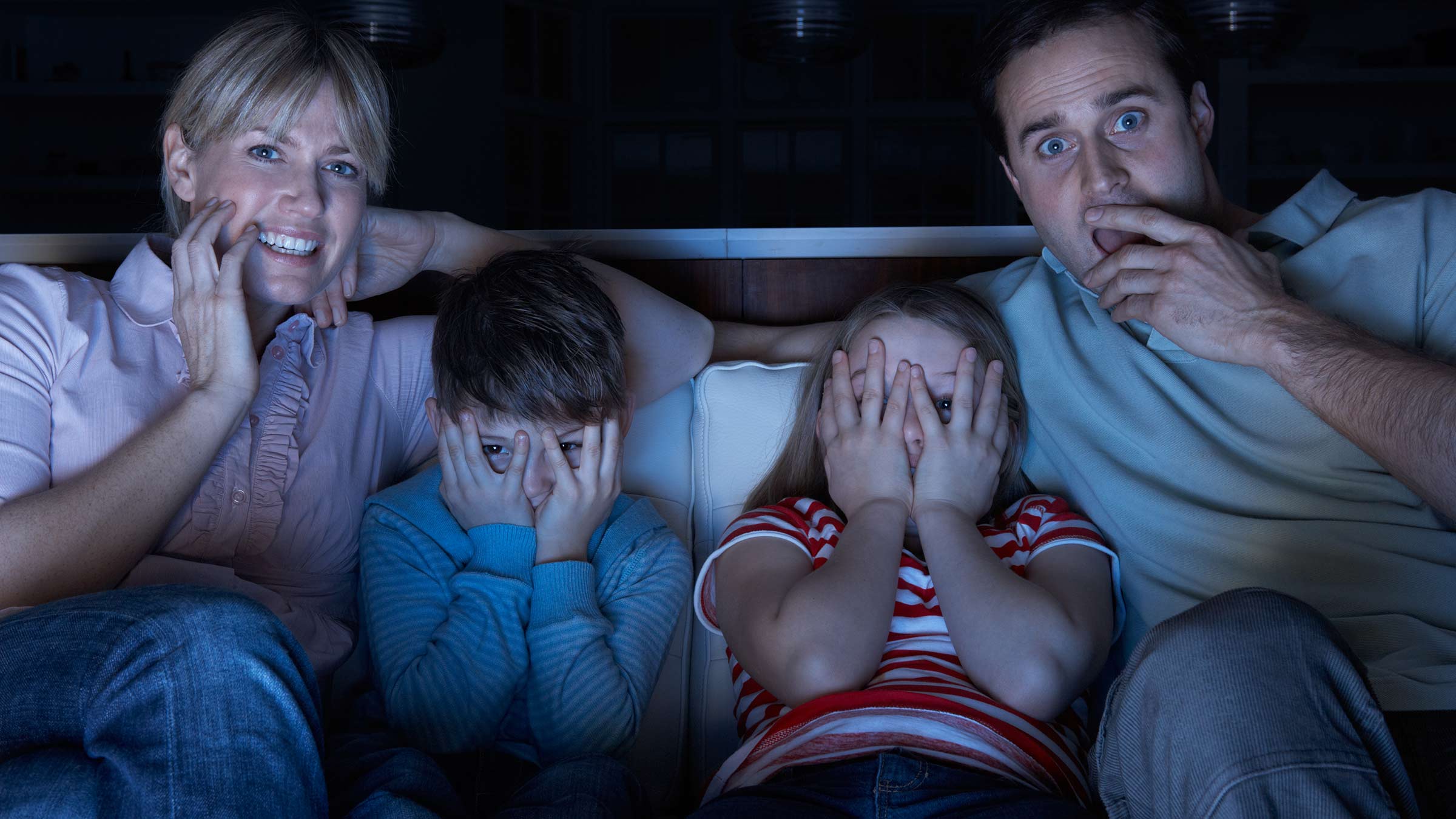
It’s nearly Halloween. Haunted houses, scary movies and creepy costumes are everywhere. The nights are growing longer and shadows creep and haunt us. We’re afraid — but we also enjoy it.
Well, some of us enjoy it. But some of us you can’t drag into a scary movie or a haunted house. Why is that?
When we get scared, our brain’s immediate response is to go into fight-or-flight. Our hearts race, our muscles tighten, we jump, we scream. When we watch a horror movie, it stimulates the brain and it responds with the physical and emotional sensations we call fear. And believe it or not, for some people, this is a lot of fun.
After the initial shock of the scare has sunk into our brains, our higher thinking processes then kick in. Our complex, amazing brains integrate both the sensation of being scared, the sensations of what we are hearing and seeing, as well as the meaning of the events on the screen. Our brains respond to the tension in these movies, the unreality of them, as well as the relevance of the fears.
What is fun about being scared?
There are a number of theories about this. Some think that scary movies access a deeper part of our collective consciousness as humans. It draws us closer when we have a shared experience of being afraid of the dark, or of ghouls, or of axe murderers. At one time, we thought that being scared could decrease anger or aggression, although more recent work hasn’t supported this concept.
That recent work suggests there are different experiences people have while watching horror movies. Some people enjoy the gore, some people like being startled and some people love the sheer escapism it offers. Scary movies may serve a different purpose for each person.
Being spooked isn’t fun for everyone
Just because something is fun for some people doesn’t mean it’s for everyone. All of us have different temperaments and different histories. If you have anxiety or are sensitive to scary situations, it's fine to avoid horror movies and haunted houses. And some of us just aren’t interested, which is also normal.
Children also may be better off avoiding intensely scary situations, as it's developmentally normal for younger kids to struggle to distinguish fantasy from reality. As a result, they’re more likely to think what they’re seeing could reappear in the darkness of their bedroom. Fortunately, there are many “spooky but not scary” movies and adventures available that are age appropriate.
What happens to your brain when you watch a scary movie?
Your brain chemistry drives your reaction and sensations when you react to scary movies and other situations that are full of fear and distress.
As the spine-chilling images flicker across the screen, your brain is being hijacked by fear.
An area of the temporal lobe called the amygdala instructs your body on how to respond to fear, affecting not only your brain, but also your heart, lungs and hormones. It mediates the initial response to a threat stimulus.
What happens to the rest of your body during a scary movie?
Your body is preparing for your fight-or-flight decision against the perceived threat. This response often happens without conscious input and has been called an “amygdala hijack.” Your body is getting ready to either fight or run away from whatever is scaring you.
The amygdala hijack then results in a variety of physical responses:
You freeze: This makes you less visible to a potential predator.
Your heart and breathing rates quicken: This increased heart rate boosts the oxygen supply to the rest of your body. It also causes blood to move from your digestive system to your muscles so they’ll be strong enough to either run away or fight. You also may have trouble catching your breath. This is the body’s way of increasing respiration rate and, therefore, making more oxygen available as fuel for the body.
You have an upset stomach or feel nauseous or pressure to have bowel movements: In earlier times, when our ancestors faced challenges from a predator, such as a bear attacking, these bodily reactions would have geared you up to fight or flee. In some dangerous situations, your body was literally getting rid of stuff (vomiting, for example) to help you either run away or fight for your life. This is also a consequence of moving blood flow away from the gastrointestinal system and toward the muscles to prepare the body for immediate action.
Your cortisol and adrenaline levels rise: These stress hormones spread and intensify the physical responses described above. They allow the body to continue in this “fight-or-flight” status for as long as possible. When you hear of people performing incredible feats of strength in crisis, like lifting a car off an injured person, thank cortisol and adrenaline for that.
Your mental focus sharpens: Colors are brighter, movements are more visible, hearing is more acute. Being afraid immediately gets the brain’s attention so that you’re no longer wondering what you might have for lunch or when your boss wants you to turn in the latest project. All your attention is entirely directed to the situation at hand. With a sharper mental focus, you can respond more quickly to the danger you’re facing.
Are there any benefits to scaring yourself?
The experience of your brain calming itself down after watching a scary movie is actually neuro-chemically very pleasurable. That’s because the dopamine release related to the “rest-and-digest” brain response causes an increased sense of well-being.
At the same time, there is a psychological benefit to experiencing something that seems scary or risky and then coming out the other end safe and well. It challenges our beliefs about risk – and, in some ways, it can “reset the thermostat” for people so that things that had seemed intimidating may be easier to deal with in the future. After watching two hours of a Halloween scare-fest, it’s not as worrisome to ask your boss for a raise, face a budget shortfall or prepare to give a public speech.
And, finally, watching scary movies can provide a safe way to escape from the sometimes-difficult realities of the world.

Help for mental health conditions
Ohio State offers personalized, compassionate care for your mental health concerns.
Learn more




